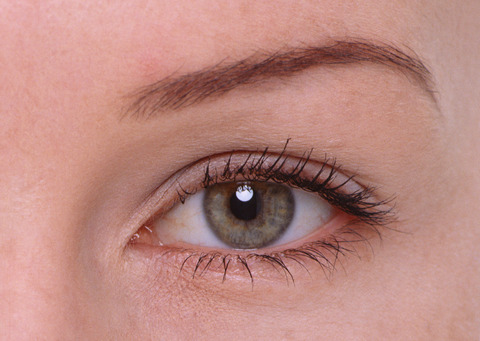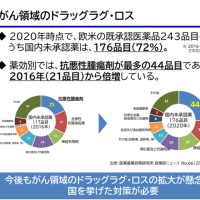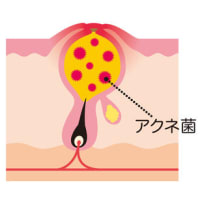
COVID-19
The number of people googling "my eyes hurt" has increased in the areas where more cases of COVID-19 have been reported, a data scientist has found.
By looking at search trends, Seth Stephens-Davidowitz, a former data scientist at Google, found there had been a spike in people looking for information on eye pain in the previous two weeks. These were "almost exclusively" in areas with high coronavirus rates, he wrote in an opinion piece in the New York Times. Areas include New York, New Jersey and Connecticut, which have all been severely impacted by the pandemic.
How the eyes are affected by COVID-19 is being investigated. There is some research to suggest conjunctivitis is a symptom of the new coronavirus. In a report looking at the ocular characteristics of the disease published in JAMA Ophthalmology, researchers from China looked at 38 patients, 12 of who had some changes to their eyes while also diagnosed with COVID-19. Problems included the eyes being excessively watery, conjunctival congestion, and swelling of the tissue lining eyelids and surface of the eye. These symptoms were often found in people with more severe manifestations of the disease.
A nurse treating COVID-19 patients also said many of the people whose health had been impacted hardest appeared to have red eyes. Chelsey Earnest of the Life Care Center, Washington, told CNN: "It's something that I witnessed in all of [the patients]. They have, like ... allergy eyes. The white part of the eye is not red. It's more like they have red eye shadow on the outside of their eyes."
It is thought pink eye is a symptom of coronavirus in between 1 and 3 percent of patients. In a study of over 1,000 COVID-19 patients in China published in the NEJM, researchers found "conjunctival congestion" was present in around 0.8 percent of patients.
Stephens-Davidowitz said eye pain has not had a huge amount of attention as a potential symptom of coronavirus. Compared with searches for pink eye, there was a far greater correlation between COVID-19 cases and eye pain. "In fact, all eye-related complaints except pain that I looked at show little-to-no relationship with COVID-19 rates," he wrote.
"There is also some evidence for eye pain as a symptom of COVID-19 from searches in other parts of the world. Notably, searches for eye pain rose above fourfold in Spain between the middle of February and the middle of March and rose about 50 percent in Iran in March," he wrote. "In Italy, searches for "bruciore occhi" ("burning eyes") were five times their usual levels in March."
Stephens-Davidowitz said the searches for eye pain do not appear to be the result of allergies, as there is no relationship with pollen concentrations. He added the increased screen time from being at home more also does not appear to be involved in the search data. "I think search data offers suggestive evidence that eye pain can be a symptom of the disease," he wrote, adding that searches for eye pain are still far lower than for other symptoms of COVID-19, such as loss of smell.
"Nonetheless, doctors and public health officials should probably look closely at the relationship between COVID-19 and eye pain. If nothing else, we need to understand why there is frequently a large uptick in people telling Google that their eyes hurt when known cases of COVID-19 in a location rise to extremely high levels."
There is evidence to suggest coronavirus can spread via the eyes, with the World Health Organization and U.S. Centers for Disease Control and Prevention both advising people avoid touching their eyes with unwashed hands. A study due to appear in the journal Ophthalmology found there was a low risk of the virus being spread via tears. However, as the American Association of Ophthalmology (AAO) notes: "There is also evidence for SARS-CoV-2 [the virus that causes COVID-19] RNA in tears of COVID-19 patients with conjunctivitis, although infectious virus has not yet been cultured from the conjunctiva of any COVID-19 patient."
Advice issued by the AAO eye pain appears to be a "less specific" symptom of coronavirus. It said ophthalmologists should be aware of the potential link between conjunctivitis and COVID-19. "Because conjunctivitis is a common condition overall, and patients with conjunctivitis frequently present to eye clinics or emergency departments, it may happen that ophthalmologists are the first providers to evaluate patients possibly infected with COVID-19," the AAO said. "It is possible—but not proven—that a patient with COVID-19-associated conjunctivitis could have infectious virus in their ocular secretions."
https://www.newsweek.com/eye-pain-symptom-coronavirus-google-searches-my-eyes-hurt-areas-high-covid-19-rates-1497016
<感染多発地域で「目が痛む」と検索する人が増えている>
新型コロナウイルスの感染者が多い複数の地域で、「目が痛い」とグーグル検索する人が増えているらしい。
かつてグーグルのデータサイエンティストだったセス・スティーブンズ・ダビドウィッツは、検索トレンドをチェックしていて、過去2週間で目の痛みについて調べる人が急増していることを発見した。ニューヨーク・タイムズ紙に投稿した記事の中でダビドウィッツは、「目が痛い」という検索は、新型コロナウイルスの感染率が高い地域に「ほぼ集中」していた、と指摘した。感染拡大震源地のニューヨークやニュージャージー、コネチカットなどの地域だ。
COVID-19(新型コロナウイルス感染症)が目にどのような影響をもたらすかはまだ分からないないが、結膜炎がこの感染症の症状のひとつだと示唆する研究結果もある。米国医師会報の眼科専門誌に発表された研究報告によれば、中国の研究チームがCOVID-19の患者38人を調べたところ、12人に目の異常が認められた。涙の量が増えたり、結膜が充血したり腫れたりする(浮腫)などの異常が、COVID-19の症状がより進行した患者に多かったということだ。
充血とも違う?
またCOVID-19の患者の治療に携わっているある看護師は、重症患者の多くに目の充血がみられると言っている。ワシントン州の高齢者施設に勤めるチェルシー・アーネストはCNNの取材に対して、「(目の充血は)全ての患者にみられた症状だ。アレルギーのような感じで、白目が充血するのではなく、目の周りに赤いアイシャドーを塗っているような感じになる」と語った。
新型コロナウイルスに感染した患者の1~3%に、こうした目の赤みが現れると考えられている。ニューイングランド・ジャーナル・オブ・メディスン誌に発表された研究報告によれば、中国の研究チームがCOVID-19の患者1000人以上を対象に行った調査で、患者のおよそ0.8%に「結膜の充血」がみられたという。
もっとも、スティーブンズ・ダビドウィッツが発見したのは、目の「赤み」ではなく目の「痛み」だ。「私が調べたところでは、痛み以外の目の異常に関する検索は、COVID-19の発生率とほとんど、あるいは全く関係がなかった」と彼は書いている。
さらに彼はこう続けた。「アメリカ以外の国や地域での検索トレンドを見ても、目の痛みがCOVID-19のひとつの症状であることを示す証拠がいくつかある。スペインでは2月半ばから3月半ばにかけて、目の痛みに関する検索がそれまでの4倍以上に増えた。イランでも3月に、目の痛みに関する検索がそれまでの約1.5倍に増えた。イタリアでは3月、「焼けるような目の痛み」の検索件数が普段の5倍に増えた」
スティーブンズ・ダビドウィッツは、こうした検索は花粉の多い地域に集中している訳ではないため、アレルギーとは関係なさそうだと指摘。また、自宅でデジタル機器を使う時間が増えていることも、検索データとは関係なさそうだと述べた。「臭いを感じなくなる」などの症状に関する検索ほど多くはないが、「目の痛みはCOVID-19の症状として考えられる」という。「医師や公衆衛生当局者は、COVID-19と目の痛みの関係を詳しく調べるべきだ」
新型コロナウイルスは、目から感染する可能性があることが分かっており、WHO(世界保健機関)と米疾病対策センター(CDC)はいずれも、洗っていない手で目を触らないように勧告している。米国医師会報の眼科専門誌に近く発表される予定のある研究報告は、涙を介して感染が広まるリスクは低いとしているが、米国眼科学会(AAO)は「結膜炎の症状があるCOVID-19患者の涙から、新型コロナウイルスのRNAが検出された例はある」としている。
米国眼科学会の見解によれば、目の痛みは新型コロナウイルス感染の「特異的な」症状という訳ではなさそうだ。それでも同学会は眼科医らに対して、結膜炎とCOVID-19に関連がある可能性については認識しておくべきだと勧告。「結膜炎はよくある症状で、患者が眼科医院や救急外来を訪れるケースも多いため、COVID-19に感染している可能性のある患者を最初に診るのが眼科医になることもあり得る」と指摘し、「患者がCOVID-19に感染して結膜炎の症状が出ている場合、その患者の目の分泌物にウイルスが含まれていることも(証明はされていないが)考えられる」と警告している。
https://www.newsweekjapan.jp/stories/world/2020/04/post-93089_2.php
新型コロナウイルス感染症の目に関する情報について(公益財団法人日本眼科学会)
https://www.gankaikai.or.jp/info/20200402_COVID-19.pdf
新型コロナウィルスは目からも感染する!コンタクトレンズの付け外しにも注意
https://dot.asahi.com/dot/2020041000059.html
<ผู้คนจำนวนมากขึ้นกำลังค้นหา "เจ็บตา" ในบริเวณที่มีการติดเชื้อสูง>
ดูเหมือนว่าผู้คนจำนวนมากกำลังค้นหาคำว่า "เจ็บตา" ของ Google ในหลาย ๆ พื้นที่ที่มีการติดเชื้อ coronavirus ใหม่
เมื่อนักวิทยาศาสตร์ด้านข้อมูลของ Google เซทสตีเวนส์เดวิดวิตซ์ทำการตรวจสอบแนวโน้มการค้นหาและพบว่ามีคนจำนวนมากกำลังมองหาอาการปวดตาในช่วงสองสัปดาห์ที่ผ่านมา ในบทความใน New York Times David Witz ชี้ให้เห็นว่าการค้นหา "เจ็บตา" คือ "เกือบจะเข้มข้น" ในพื้นที่ที่ความชุกของ coronavirus ใหม่อยู่ในระดับสูง ศูนย์กลางของการแพร่กระจายของโรคระบาดคือนิวยอร์กนิวเจอร์ซีย์คอนเนตทิคัตและพื้นที่อื่น ๆ
ไม่มีใครรู้ว่า COVID-19 (การติดเชื้อ coronavirus ชนิดใหม่) มีผลต่อดวงตาอย่างไร แต่จากการศึกษาพบว่าเยื่อบุตาอักเสบเป็นอาการของการติดเชื้อ จากการศึกษาที่ตีพิมพ์ในวารสารจักษุวิทยาของสมาคมการแพทย์อเมริกันทีมวิจัยจีนทำการตรวจผู้ป่วย 38 รายที่มี COVID-19 และพบผู้ป่วย 12 รายที่มีความผิดปกติของดวงตา ความผิดปกติเช่นปริมาณน้ำตาที่เพิ่มขึ้นและความแออัดและบวมของเยื่อบุตา (บวม) พบได้บ่อยในผู้ป่วยที่มีอาการ COVID-19 ขั้นสูง
มันแตกต่างจากภาวะเลือดคั่งหรือไม่
พยาบาลคนหนึ่งที่รักษาผู้ป่วยด้วย COVID-19 กล่าวว่าผู้ป่วยที่ป่วยหนักหลายรายมีอาการตาแดง Chelsea Ernest ซึ่งเป็นสถาบันอาวุโสในรัฐวอชิงตันบอกกับ CNN ว่า "(อาการตาแดง) เป็นอาการที่พบได้ในผู้ป่วยทุกราย มันเหมือนกับมีอายแชโดว์สีแดงล้อมรอบดวงตาของคุณ "
เป็นที่เชื่อกันว่า 1-3% ของผู้ป่วยที่ติดเชื้อ coronavirus ใหม่พัฒนาสีแดงนี้ จากการศึกษาที่ตีพิมพ์ในวารสารการแพทย์นิวอิงแลนด์การศึกษาโดยทีมจีนในผู้ป่วยมากกว่า 1,000 รายที่มี COVID-19 พบว่าประมาณ 0.8% ของผู้ป่วยมีอาการ "แออัด conjunctival" "ถูกเห็น
อย่างไรก็ตามสิ่งที่สตีเว่นเดวิดวิทซ์ค้นพบนั้นไม่ใช่ "สีแดง" แต่ "เจ็บปวด" ในสายตา “ ในการวิจัยของฉันการค้นหาความผิดปกติของดวงตานอกเหนือจากความเจ็บปวดมีความสัมพันธ์เพียงเล็กน้อยหรือไม่มีเลยกับอุบัติการณ์ของ COVID-19” เขาเขียน
เขาพูดต่อ: "เมื่อดูที่แนวโน้มการค้นหานอกสหรัฐอเมริกามีหลักฐานว่าอาการปวดตาเป็นอาการของ COVID-19 ในสเปนกลางเดือนกุมภาพันธ์ถึงกลางเดือนมีนาคม การค้นหาความเจ็บปวดในดวงตาเพิ่มขึ้นมากกว่าสี่เท่าตั้งแต่นั้นมาการค้นหาความเจ็บปวดทางตาเพิ่มขึ้นประมาณ 1.5 เท่าในเดือนมีนาคมในอิหร่านและ "การเผาไหม้ปวดตา" ในเดือนมีนาคมในอิตาลี ข้อความค้นหาเพิ่มขึ้นห้าเท่า "
Stevens Davidwitz ตั้งข้อสังเกตว่าการค้นหาเหล่านี้ไม่น่าจะเกี่ยวข้องกับโรคภูมิแพ้เนื่องจากไม่ได้มีการกระจุกตัวอยู่ในพื้นที่ที่อุดมด้วยละอองเกสร เขาเสริมว่าการเพิ่มขึ้นของการใช้อุปกรณ์ดิจิตอลที่บ้านนั้นไม่น่าจะเกี่ยวข้องกับข้อมูลการค้นหา มันไม่ธรรมดาเท่ากับการค้นหาอาการต่าง ๆ เช่น "ไม่มีกลิ่น" แต่บอกว่า "อาการปวดตานั้นถือได้ว่าเป็นอาการของ COVID-19" "แพทย์และเจ้าหน้าที่สาธารณสุขควรพิจารณาความสัมพันธ์ระหว่าง COVID-19 กับอาการปวดตาอย่างใกล้ชิด"
coronavirus ใหม่แสดงให้เห็นผ่านตาและทั้งองค์การอนามัยโลกและศูนย์ควบคุมโรคแห่งสหรัฐอเมริกาได้แนะนำให้หลีกเลี่ยงมือที่ไม่ได้แตะต้องเลย ที่จะมี การศึกษาที่จะเกิดขึ้นในนิตยสารจักษุวิทยาของสมาคมการแพทย์อเมริกันรายงานว่าความเสี่ยงของการส่งผ่านน้ำตาต่ำ แต่สถาบันการศึกษาจักษุแพทย์อเมริกัน (AAO) ระบุว่า "ผู้ป่วย COVID-19 ที่มีอาการตาแดง มีหลายกรณีที่ตรวจพบ RNA ของ coronavirus ใหม่ด้วยน้ำตา "
ตามที่ American Academy of จักษุวิทยา, อาการปวดตาไม่น่าจะเป็นอาการ "เฉพาะ" ของการติดเชื้อ coronavirus ใหม่ อย่างไรก็ตามสมาคมแนะนำจักษุแพทย์ว่าพวกเขาควรตระหนักถึงความเป็นไปได้ในการเชื่อมโยงระหว่างเยื่อบุตาอักเสบและ COVID-19 "เยื่อบุตาอักเสบเป็นอาการที่พบบ่อยและผู้ป่วยมักจะไปที่คลินิกจักษุและแผนกฉุกเฉินดังนั้นจึงอาจเป็นครั้งแรกที่จักษุแพทย์เห็นผู้ป่วยที่ติดเชื้อ COVID-19" "ถ้าผู้ป่วยติดเชื้อ COVID-19 และมีอาการตาแดงก็เป็นไปได้ (แต่ไม่ได้พิสูจน์) ว่าการหลั่งของดวงตาของผู้ป่วยมีไวรัส" มันได้เตือน












※コメント投稿者のブログIDはブログ作成者のみに通知されます